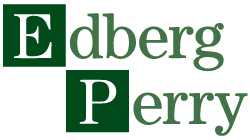A compelling feature of a 401(k) type retirement plan has always been the opportunity to contribute money from your current income on a pre-tax basis today – let it work for you over the years – and then pay taxes on the accumulated balance as you withdraw it in future. That’s a real attraction to many company owners and their workers. But what if you flipped this – and contributed money to your retirement savings account with post-tax dollars that you invested over time- and then had the opportunity to withdraw the accumulated balance tax free – including the earnings. That’s what happens in a Roth account.
Just like the original Roth IRA, the Roth 401(k) account has the advantage of growing tax-free, but the 401k version doesn’t have any of the associated income limits.
When we offer a Roth feature in plan like a 401(k), it’s managed as a separate source of money so that contributions, earnings, and distributions are tracked separately from pre-tax sources.
Contributing money in a Roth account isn’t right for everyone. It may depend on their age, their income, what tax bracket they’re in and what tax bracket they may likely be in at retirement. A Roth account tends to be most useful to someone who expects to be in a higher tax bracket when they retire than they’re in during the years they contribute to their plan.
For example:
A Roth account can benefit a young worker looking to get a jump on his retirement savings before he’s in a higher tax bracket later in his career.
It can also be helpful to a high income earner who would like to have a balance of tax-free money available in retirement.
It can also be helpful to a saver who may be close to the required minimum distribution age.
Offering a Roth feature does add responsibilities for the plan sponsor, advisor, and recordkeeper and that includes the need to provide greater education and to engage with participants to explain the pros and cons of contributing to a Roth account.
Contact us and let’s discuss the details and benefits in establishing a Roth 401(k) so that you can evaluate which of your clients may be good candidates for this opportunity.



